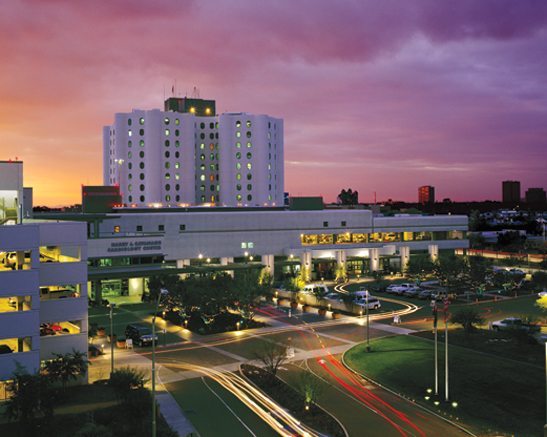As bad as 2009 was, the health care industry in Arizona is still bracing for the worst. So says John R. Rivers, president and chief executive officer of the Arizona Hospital and Healthcare Association (AzHHA), whose organization, along with others, lobbied unsuccessfully against massive legislative reductions totaling $2.7 billion to the Arizona Health Care Cost Containment System (AHCCCS) and Arizona Department of Health Services’ budgets for fiscal 2011.
The cuts were part of an effort by the Legislature to dig the state out of the deficit hole it finds itself in.
“I can’t predict who is going to do what in response to these cutbacks, but I can tell you that every person in Arizona will be affected by these cuts in some negative manner — either though higher insurance premiums, more overcrowding in hospital emergency rooms, reduced services provided by hospitals or even some hospital closures,” Rivers says. “The impact of these cuts will be far-reaching and long-lasting.”
Hospitals alone stand to lose $1.15 billion in the fiscal year that starts July 1.
“Our focus and energies must be on the daunting challenge of dealing with the negative impact on patient care as a result of the budget cuts recently enacted in Arizona,” says Peter Fine, president and CEO of Banner Health. “These cuts will result in reductions of $2.7 billion in health care spending, including scheduled cuts of more than $1 billion to Arizona hospitals in 2011. This will place tremendous pressure on the state’s hospitals.”
The AzHHA position is that the budget cuts not only will devastate Arizona’s health care community, but also cripple the state’s economy. Arizona’s hospital community employs approximately 73,000 people and contributes $11.5 billion to the state’s gross product. In a recent report, the Seidman Research Institute at the W.P. Carey School of Business at Arizona State University estimated the budget cuts would result in a loss of 42,000 jobs across virtually every segment of the Arizona economy.
Those job losses, Rivers says, “will worsen Arizona’s economic downturn and flies in the face of legislators’ efforts to create new jobs and revitalize the state’s business climate.”
The health care sector would suffer the greatest loss of jobs, totaling an estimated 19,600 in 2011. Employment losses also would hit such categories as arts and entertainment, construction, finance, manufacturing, mining, real estate, retail, transportation and warehousing, according to the ASU report.
Other startling numbers from the report indicate that real disposable income would be reduced by $1.74 billion — approximately $200 per capita — and the state’s population would shrink by 10,000.
Even before the Legislature took final action, St. Joseph’s Hospital & Medical Center already was dealing with the state’s budget implosion.
“Because we are the largest hospital in Arizona, and treat more AHCCCS patients than any other private hospital, these cuts have been devastating to us,” says Linda Hunt, service area president of Catholic Healthcare West (CHW) Arizona and president of St. Joseph’s. “The Legislature cut more than $14 million in funding to our hospital alone between mid-December and February. Part of these cuts wiped out funding for our graduate medical education program, which trains more than 200 medical residents in 10 different clinical specialties. We now have to make up the deficit. In addition, our charity care costs continue to increase, we are seeing more uninsured patients in our ER, and we are seeing more mentally ill patients in the ER because they have nowhere else to get help.”
Hunt’s concern for the most vulnerable members of society is echoed by Betsey Bayless, president and CEO of Maricopa Integrated Health System (MIHS), which operates the Maricopa Medical Center.
“About 65 percent of our patients are on AHCCCS, and we operate the Valley’s largest psychiatric inpatient hospital, Desert Vista, in Mesa,” Bayless says. “Furthermore, patients without coverage will seek care only when their conditions worsen, thus driving up emergency room demand — the most costly means of caring for illness and disease.”
Further putting a human face on the budget cuts, health care coverage is being eliminated for 310,500 low-income adults and 47,000 children, and mental health treatment ends for 36,500 adults and children.
Hospital officials fear their emergency rooms will be inundated by additional waves of the uninsured. Emergency rooms are federally mandated to screen and stabilize all patients, without regard to their ability to pay for care. In 2008, Arizona hospitals provided approximately $392 million in uncompensated care to uninsured patients. Hospitals make up the loss by absorbing or shifting costs to commercial health plans, which then charge businesses and individuals higher health insurance premiums, AzHHA maintains. The cost-shift, coupled with further cuts in AHCCCS hospital payment rates, amounts to a hidden tax on health care consumers, according to AzHHA.
The budget cuts also eliminate the KidsCare Program, which provides medical services and preventive health care for children of families who cannot afford insurance. Ending the program saves the state $22.9 million, but costs the state $95.5 million in federal matching funds, for a total loss of $119 million to the state’s health care system. Hospitals will lose $44 million in revenue, AzHHA says.
Of extreme concern to the medical community is a measure on the November ballot that targets Proposition 204, which was approved by voters in 2000. Prop. 204 expanded eligibility for AHCCCS, but the new ballot measure asks voters to deny eligibility to an estimated 315,000 individuals who benefited from the 2000 proposition. Under the ballot proposal this year, the state would save $765 million, but would lose $1.5 billion in federal matching funds, for a total reduction of $2.3 billion to the Arizona health care community. Hospitals alone would lose an estimated $851 million in revenue.
To cope with reduced funding, MIHS has limited new hires and is formulating plans to address these unprecedented budget cuts.
“Moreover,” Bayless says, “we recognize this is not our problem alone. Rather this is a community-wide issue, and I have been reaching out to other health care leaders about ways we can work together to best care for our Valley residents.”
Hunt says St. Joseph’s employees have provided dozens of ideas on how the hospital can operate more efficiently, while preserving patient safety and quality care.
“We are looking at a wide variety of community, academic and business partnerships, and are re-evaluating our strategic plan to add more focus on the service lines that are most needed in the region,” Hunt says. “We are a ‘destination hospital’ for many complex illnesses and will continue to bring patients in from around the country and around the world. We will also advocate strongly for the state to provide services for the most needy and encourage our leaders to see health care as a vital contributor to the state’s economic recovery.”
As for its next step, Rivers says AzHHA will work to guard the funds that escaped the budget axe.
“We will develop a proposal that protects these health care programs either through new revenue sources or requiring that existing revenue sources earmarked for these programs are used for their intended purposes — not just dropped into a black hole in the general fund,” he says.




